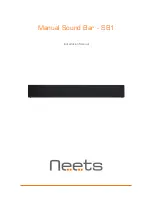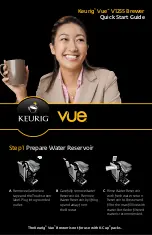
10
www.strata.co.nz
EZIARC 160 • EZIARC200
High Tensile and Alloy Steels
The two most prominent effects of welding these
steels are the formation of a hardened zone in the
weld area, and, if suitable precautions are not taken,
the occurrence in this zone of under-bead cracks.
Hardened zone and underbead cracks in the weld area
may be reduced by using the correct electrodes, pre-
heating, using higher current settings, using larger
electrodes sizes, short runs for larger electrode de-
posits or tempering in a furnace.
Manganese Steels
The effect on manganese steel of slow cooling from
high temperatures causes embrittlement. For this
reason it is absolutely essential to keep manganese
steelcool during welding by quenching after each
weld or skip welding to distribute the heat.
Cast Iron
Most types of cast iron, except white iron, are weld-
able. White iron, because of its extreme brittleness,
generally cracks when attempts are made to weld it.
Trouble may also be experienced when welding
white-heart malleable, due to the porosity caused by
gas held in this type of iron.
Copper and Alloys
The most important factor is the high rate of heat
conductivity of copper, making pre-heating of heavy
sections necessary to give proper fusion of weld and
base metal.
Types of Electrodes
ARC Welding electrodes are classified into a number
of groups depending on their applications. There are
a great number of electrodes used for specialised in-
dustrial purposes which are not of particular interest
for everyday general work. These include some low
hydrogen types for high tensile steel, cellulose types
for welding large diameter pipes, etc. The range of
electrodes dealt with in this publication will cover the
vast majority of applications likely to be encountered;
are all easy to use.
MILD STEEL :
E6011
- This electrode is used for all-position welding or
for welding on rusty, dirty, less-than- new metal. It has a
deep, penetrating arc and is often the first choice for repair
or maintenance work.
E6013
- This all-position electrode is used for welding
clean, new sheet metal. Its soft arc has minimal spatter,
moderate penetration and an easy-to-clean slag.
E7014
- All positional, ease to use electrode for use on
thicker steel than E6013. Especially suitable for sheet metal
lap joints, fillet welds and general purpose plate welding.
E7018
- A low-hydrogen, all-position electrode used when
quality is an issue or for hard-to-weld metals. It has the ca-
pability of producing more uniform weld metal, which has
better impact properties at low temperatures.
CAST IRON:
ENI-CL
- Suitable for joining all cast irons except white
cast iron.
STAINLESS STEEL:
E318L-16
- High corrosion resistances. Ideal for dairy
work etc.
Electrodes for joining different metals
Effects of MMA Welding Various Materials










































